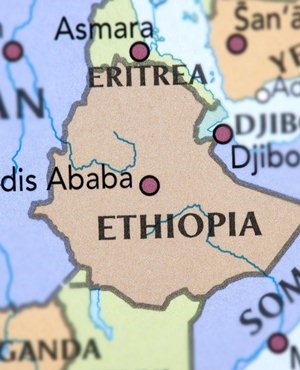Paris - A cradle of mankind, modern-day Ethiopia is riven by ethnic tensions, gripped by anti-government rebellions and now under a state of emergency.
Here are some key facts about Africa's second most populous nation:
Ancient history
Ethiopia is the oldest independent African state and one of the oldest in the world, dating back more than 2 000 years.
It also has a claim on being the birthplace of mankind. Its Awash Valley has yielded some of the earliest hominid remains, including the fossil of a partial skeleton, dubbed Lucy, which has been dated around 3.2 million years old.
With a population of around 102 million people in 2016, according to the World Bank, Ethiopia counts more than 80 ethnicities.
Around 60% are Christian and more than 30% Muslim.
Ethiopia is a federal state with considerable autonomy granted to regions and most power held by the prime minister.
It hosts the African Union's headquarters.
Famines and wars
Except for a brief period under Italian occupation between 1935 and 1941, Ethiopia was never subjected to European colonisation - a rarity in Africa.
Emperor Haile Selassie dominated between 1916 and 1974, save for a period of exile during the Italian occupation.
After 1974, when he was overthrown in a coup and later executed, Ethiopia underwent a series of military dictatorships, notably under Marxist ruler Mengistu Haile Mariam who waged a series of bloody purges dubbed the "Red Terror". He was ousted in 1991.
The late 1970s and early 1980s saw a series of devastating famines which caused widespread starvation.
The UN said 1.2 million people died in 1984-85 alone and the tragedy shot to global attention when Band Aid recorded a single to raise money for famine relief.
When Eritrea gained de-facto independence in 1991, Ethiopia was deprived of access to the Red Sea.
War broke out between the neighbours between 1998 to 2000 over a border dispute, which remains a source of tension despite an accord.
Resistance, repression
The regime was confronted in 2015 by anti-government protests originating in the Oromia region, home to the largest ethnic group, that spread in 2016.
The repression left about 940 people dead, according to the government-linked Ethiopian Human Rights Commission.
Relative calm only returned with the imposition of a state of emergency from 2016 to 2017, resulting in thousands of arrests.
The protests by the Oromo and Amhara people, around 60% of the population combined, were sparked by what they saw as the over-representation of the Tigrayan minority within the ruling regime.
Protesters also denounced constraints on individual freedoms and an imbalance in the sharing of the country's riches.
In 2018 the authorities released thousands of prisoners, including political opponents.
Mid-February the prime minister, Hailemariam Desalegn, resigned unexpectedly after protracted anti-government protests.
This led to the imposition of a six-month state of emergency and the banning of protests.
Poor country, dynamic economy
Ethiopia has the highest growth rate in Africa, averaging 10.5% between 2005-2006 and 2015-2016, but it remains one of the poorest countries with a per capita income of 660 dollars, according to the World Bank.
Coffee accounts for most export earnings but the state is investing in public works and housing and planning a move towards manufacturing.
China has funded much of the construction in development.
In the past two decades, Ethiopia has quadrupled its primary education rate, halved infant mortality and doubled accessibility to drinking water.
But Ethiopia is on its way to registering its fourth consecutive year of drought, which hits its nomadic farmers in particular.
Government and international organisations have intervened to avoid repeats of the killer famines of the 1970s and 1980s.






